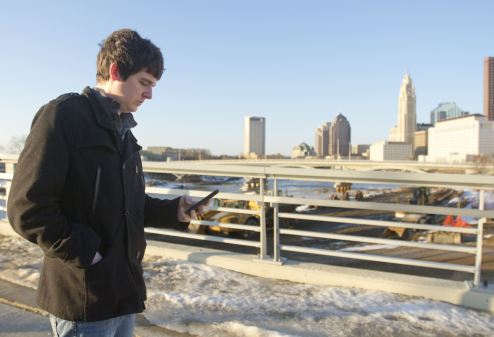Shared services, acccessibility sprout smarter cities

By 2051, the U.S. Census Bureau projects the country’s population will grow by 25 percent, expanding the nation from roughly 319 million people today to 400 million. As part of this surge, a study by the humanitarian aid organization UNICEF estimated 90 percent of these residents will live in cities. If unaccounted for, that fact threatens to congest the globe’s roadways, drain water reservoirs and overwhelm government services already straining under high demand.
To find possible remedies to these future problems, the Information Technology & Innovation Foundation’s (ITIF) brought together on Friday a panel of government, academic and industry leaders. The “Cities of Tomorrow” event, which was held in Washington D.C., was to discern how cities might adapt using insights gained from technologies like sensor networks, green energy, predictive analytics, and autonomous transport.
Panelists included Boston chief digital officer Lauren Lockwood, Boston University computer science professor Azer Bestavros and ITIF Center for Data Innovation (CDI) director Daniel Castro.
The panelists’ advice was as pragmatic as it was ambitious. With innovation they cautioned city officials not to be taken in by fanciful gadgetry, and to instead focus on technology that improved quality of life and equitably. Policies and practices, they added, shouldn’t be determined by tradition or government’s needs alone, but adopt an openness and flexibility that allows services to evolve.
Accessibility
In the public sector, “you don’t get to chose who your customers are,” explained Lockwood, who played an instrumental role directing the redesign of Boston.gov. Everyone is a customer for cities, she said. This means people with varying education and income levels, different languages, abilities and disabilities.
“Smart cities or newfangled digital tools should not require constituents to be techies themselves,” Lockwood said. “There are a lot of ways we can make improvements in cities without requiring anybody to change behaviors.”
Boston’s new website, which launched July, was developed using agile methodology to apply this thinking. Design feedback required Lockwood and her team to do a fair share of driving, stair climbing and door knocking to reach residents in their communities. She credited the citizen-centric approach for Boston.gov’s successful debut.
“The way that we’re working on the website is just a microcosm of the way we’re going about work throughout the city,” she said.
A smart city or “programmable city,” said Bestravos — who has led several university analytics projects, including chaired Boston University’s Data Science Initiative in 2014 — is one that must have capacity to interact, manage and accommodate all its constituents. Otherwise, he said, the system grows unstable and dysfunctional, as history can attest. The digital divide applies not only to low-income or less educated residents, but also to city departments that might find themselves without the right skill sets and tools.
“When you introduce a new technology, you risk actually making a divide between people” Bestavros said. “So when we talk about making technology for smart cities what we should think about is how to lessen that altogether.”
Shared Services
One department alone can’t build a smart and accessible city.
“We talk about scale, but we need to talk about being able to make comparisons across cities,” Castro said. “It’s one thing to enhance performance across cities, but what we really want to go and do eventually is find peer cities … and find common metrics that can be used to draw comparisons.”
Government often has to “reinvent the wheel” on technology projects because few municipalities have comparable data to assess if one IT solution performs better than another, Castro pointed out. A “civic standard” for performance metrics could illuminate best solutions to common city challenges, he said.
“I think one of the problems right now in the smart city development space is that while cities are sharing some solutions, they’re not completely sharing performance metrics in some standardized way,” Castro said.
This kind of standard, he said, could enhance use of other shareable technologies. Possible solutions include open source apps and application programming interfaces (APIs).
In Boston, Lockwood said the city is considering an open-source-by-default policy to enable other cities and technologists to use code from the apps they create. Boston.gov was made open source last week, and she said the city sees that release as a starting point.
“I think it allows us this opportunity to really scale in an exponential way the kinds of interesting and successful things happening around the country,” Lockwood said.






